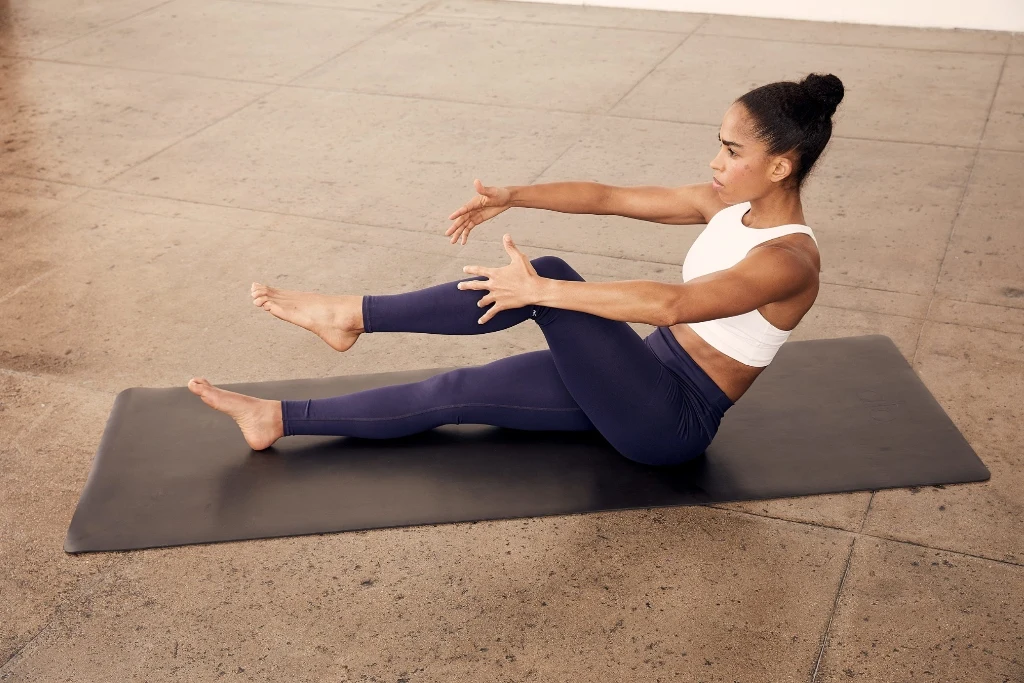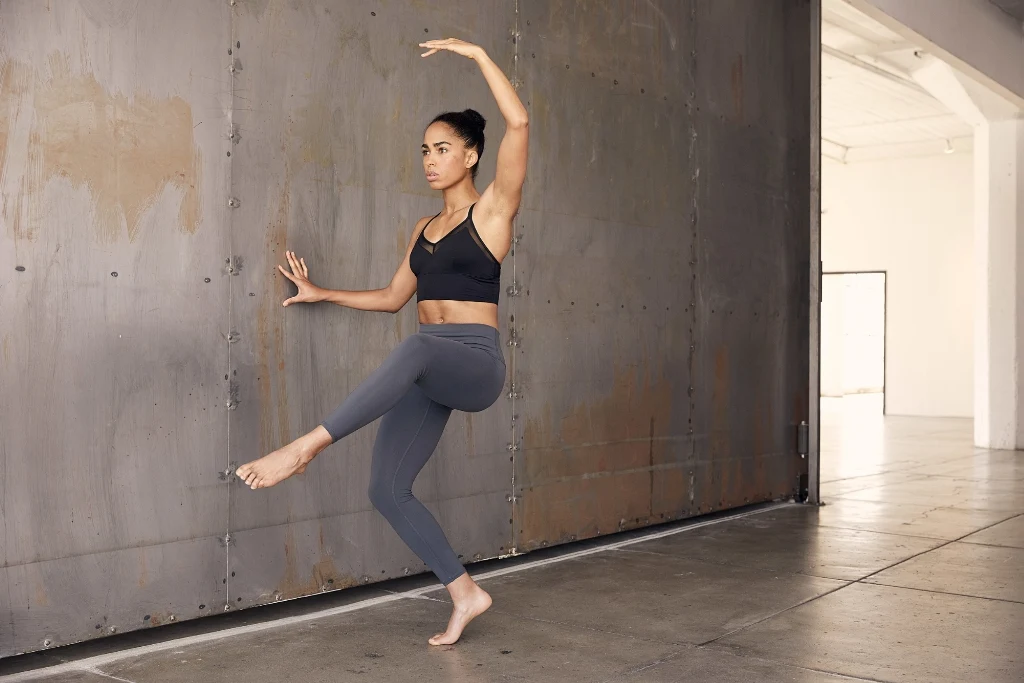Barre For Beginners: A Guide To Getting Started

November 16, 2020

Wondering what barre workouts are all about, or looking for exercise you can do at home with minimal space, equipment and impact on your joints? Barre could be exactly what you need.
Barre is a low-impact style of training (meaning you won’t be doing any jumping) that blends elements of ballet, yoga and Pilates. It’s suitable for any fitness level and any space, meaning you can practice it from the comfort of your own home using minimal equipment - a perfect option if you are balancing the demands of a busy lifestyle or simply prefer to work out at home.
Just because barre incorporates some ballet-inspired moves doesn’t mean you need to be a dancer to give it a try! No dancing skills or flexibility are required (but feel free to break a move whenever you feel like it!). If you’re new to barre, here’s what you need to start working out at home.
What do I need to start barre at home?
Barely anything! You don’t need a lot of space to get started with at-home barre workouts, as you will move around on a mat. If you don’t have a mat, you can do your workout without one.
Barre classes will often require the use of:
A barre or chair
Dumbbells or hand weights
Mat
Resistance band
Some barre exercises come from ballet warm-up moves and require you to hold a barre for balance, but a chair, hand-rail or benchtop make great substitutes if you’re doing at-home workouts.
Try to find an area of your home that will be free of distractions, where you can move freely on your mat without bumping anything, and move your chair easily throughout the workout.
Choose dumbbells or hand weights that feel comfortable for you to use during the exercises. A 1.5kg (3lb) weight is good to start with, but if you find you are struggling to perform the exercises with correct form, just switch to a lower weight. If you don’t have dumbbells or hand weights, you can use safe, heavy household objects, such as water bottles, or simply use your own bodyweight as resistance - you’ll feel the burn either way!

What are the benefits of barre?
Barre’s unique style of training, which blends ballet, yoga and Pilates, is low-impact and builds strength through high repetition of small movements such as pulsing squats and lunge variations. Some exercises also require muscular contraction in one position (such as a plank) — these are known as isometric exercises.
The exercises in barre fatigue the muscles, while also increasing flexibility, coordination, muscular endurance and control.
Because it is low-impact, barre is suitable for all fitness levels including beginners, and can be an option if you are returning to training after pregnancy (after being cleared to exercise by your healthcare professional), or after injury.
Is barre cardio?
Although barre is always low impact, it can range in intensity. Some barre classes are high-intensity and raise your heart rate significantly, making it a unique form of cardio.
If the movements in the class are too slow and your heart rate isn’t elevated enough, your barre session won’t count as a cardio workout.
If you have a fitness tracker that monitors your heart rate, you should be able to gauge which heart rate zone you are in while you’re exercising and whether your barre workout counts as cardio.
Your heart rate will be at 57-63% of your maximum heart rate if your barre class is low-intensity cardio.
Your heart rate will be at 64-76% of your maximum heart rate if your barre class is moderate-intensity cardio.
Your heart rate will be at 77-95% of your maximum heart rate if your barre class is high-intensity cardio.
Sweat Trainer Britany Williams has created Cardio Barre and Full Body with Cardio classes as part of her Barre with Britany program. Her classes are a unique form of strength training and cardio - one you can do indoors without much space or equipment.
If you are following another Sweat program and want to try barre, you can also access this training style via the “Workouts” tab in the Sweat app. Hit the “On Demand” option (next to My Program), choose Britany as your trainer or scroll down to the “Yoga, Pilates and Barre” section. If you want to try the Barre with Britany program, scroll right down to “Programs” at the bottom of the “Workouts” tab.

Which parts of the body does barre target?
Barre is designed to be a full-body workout that boosts muscular endurance and strength across your whole body.
The Barre with Britany program has four weekly workouts that target your whole body, but each has a different focus, such as:
Full Body with Push-Up & Cardio
Full Body with Cardio
Full Body with Bridge
Cardio Barre
Weekly Express Workouts
Give yourself time to get your technique right
If you’ve never tried barre before, give yourself time to learn about this style of exercise and the proper technique.
Barre with Britany has two Beginner weeks to introduce you to the style of training, the exercises and the correct technique. Training in front of a mirror can also help you to perfect your form.
Because barre uses a lot of repetition of small movements, you will become familiar with the exercises and correct technique as you progress with your training.
Ready to progress? Britany also a high intensity program available in the Sweat app to take your barre training to the next level!
Get a motivating playlist and get started
Whether you’ve never tried barre before or it’s a regular part of your routine, it is an effective style of training you can do at home.
All you need to do is set up your workout space, find a motivating workout playlist, and get ready to feel the burn.
Get moving and try Barre with Britany today. Let us know how you go in the comments

A more empowered you starts with Sweat, and our editorial team is here to bring you the latest fitness tips, trainer recommendations, wellbeing news, nutritional advice, nourishing recipes and free workouts.
* Disclaimer: This blog post is not intended to replace the advice of a medical professional. The above information should not be used to diagnose, treat, or prevent any disease or medical condition. Please consult your doctor before making any changes to your diet, sleep methods, daily activity, or fitness routine. Sweat assumes no responsibility for any personal injury or damage sustained by any recommendations, opinions, or advice given in this article.
Fitness